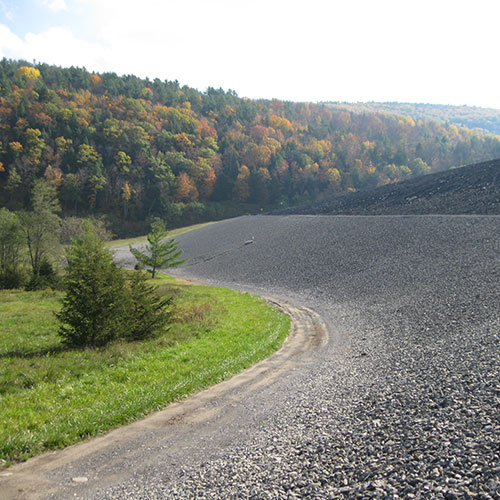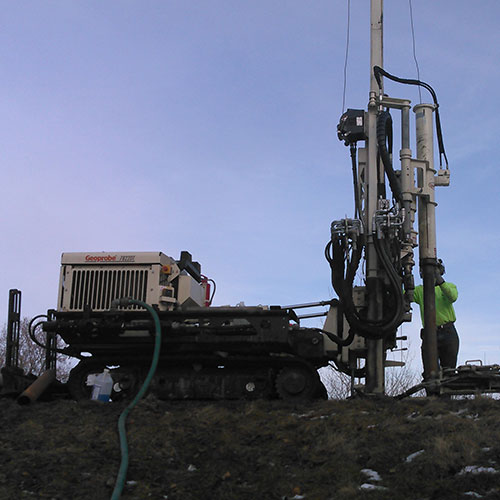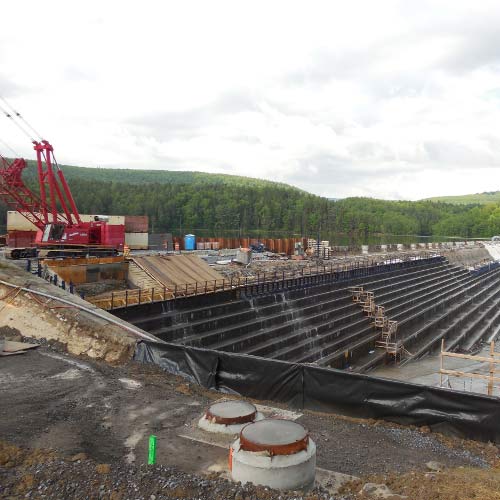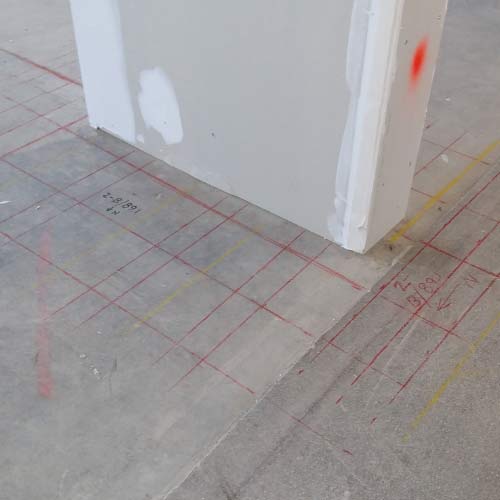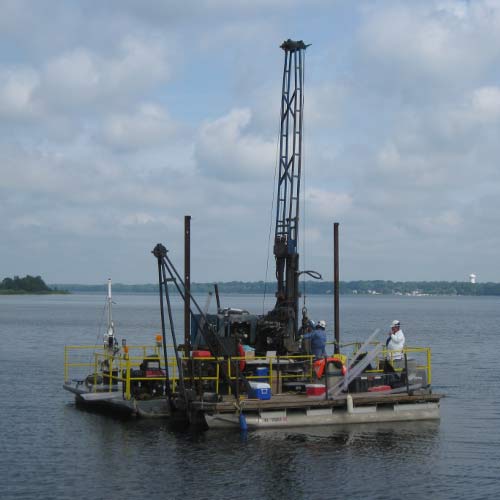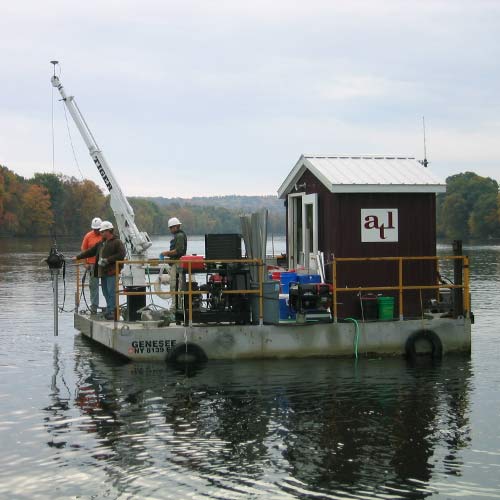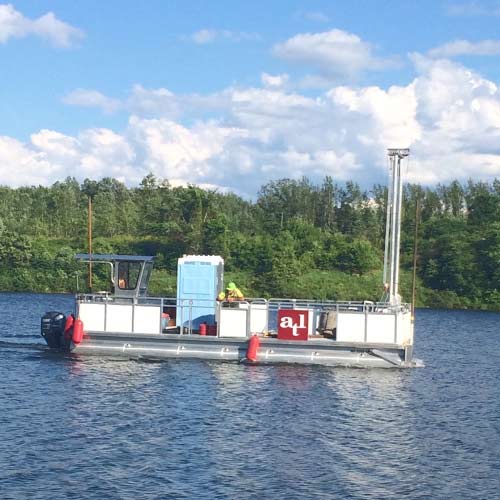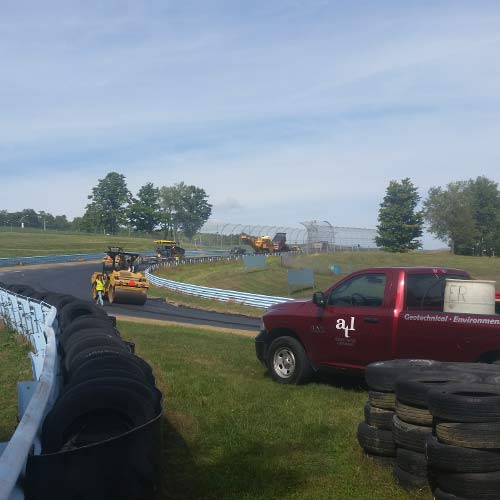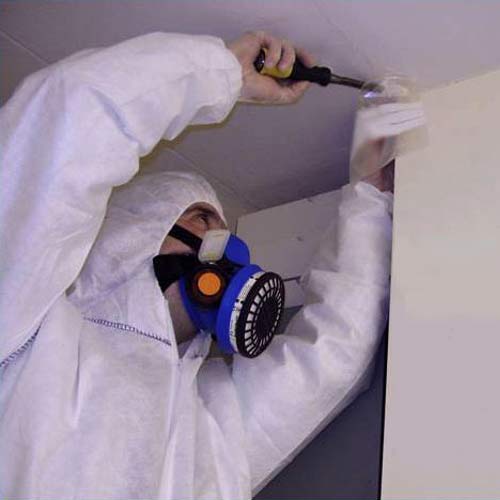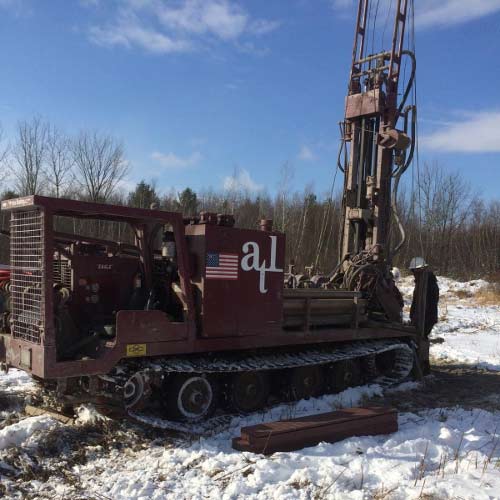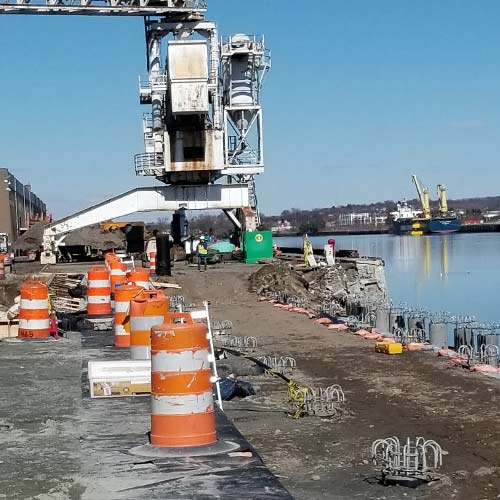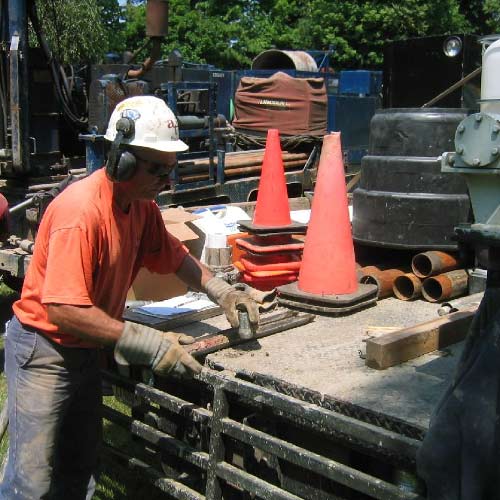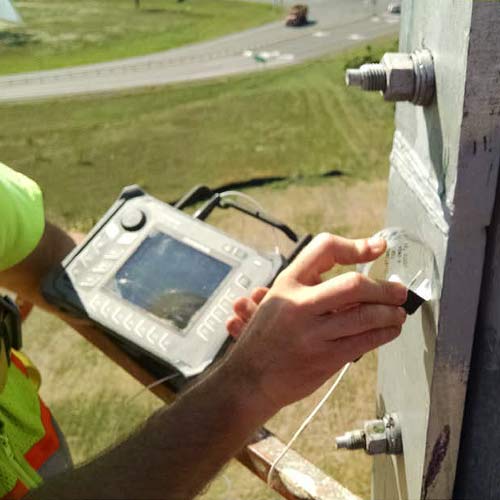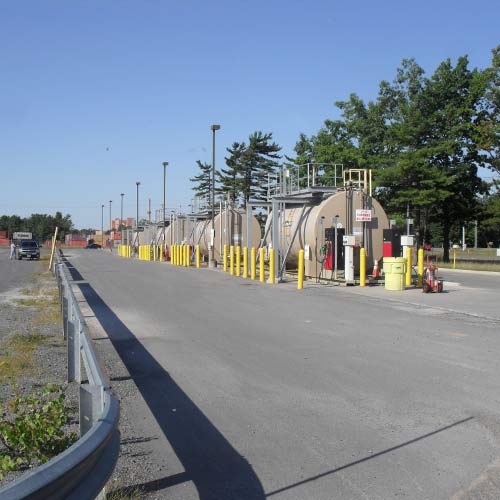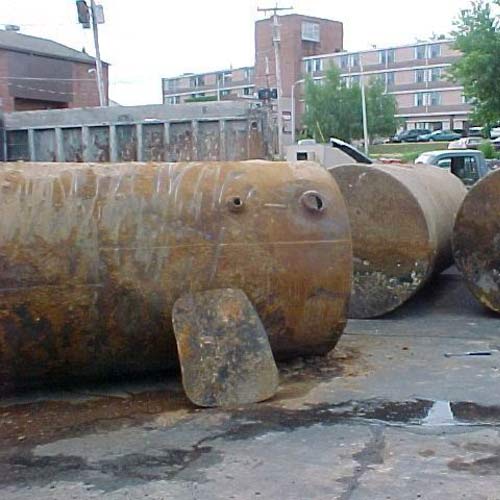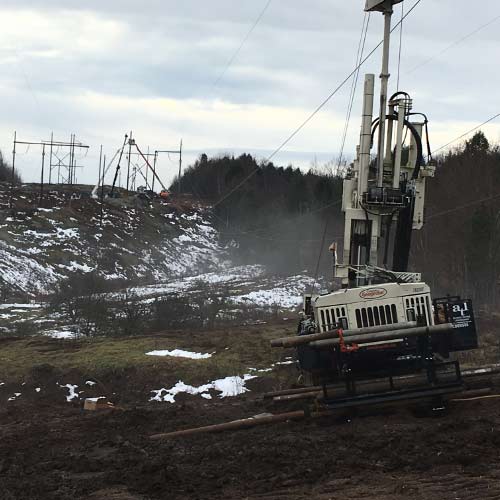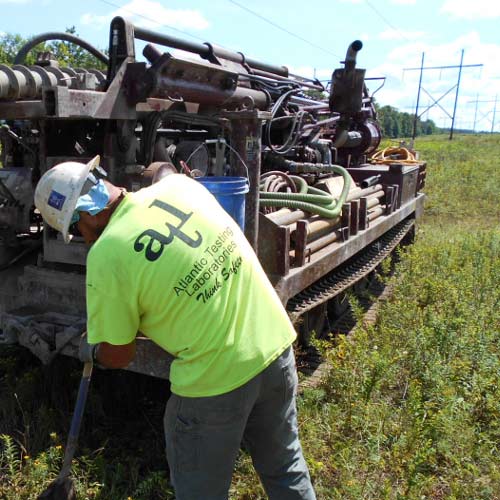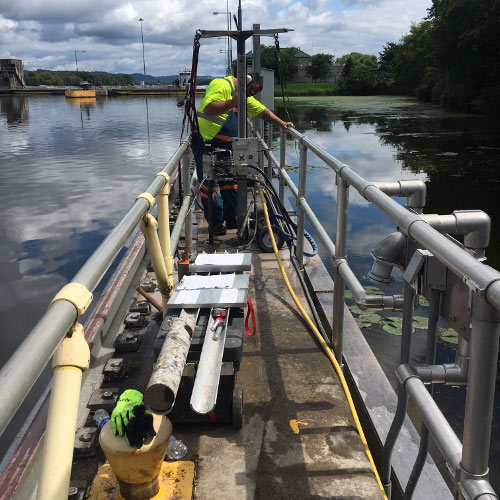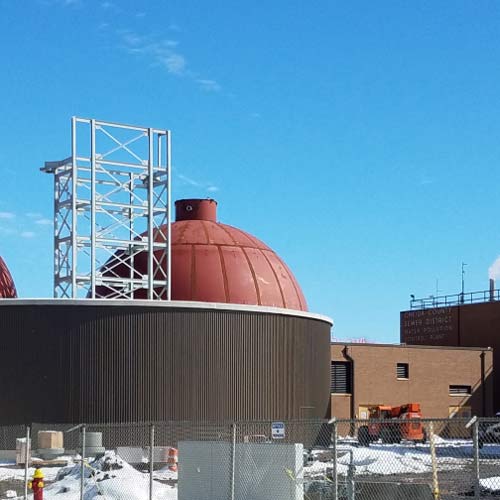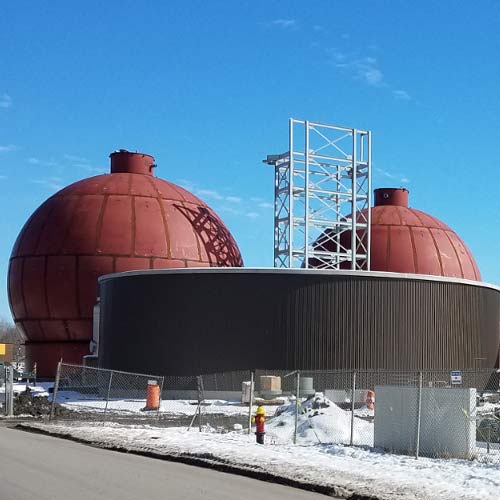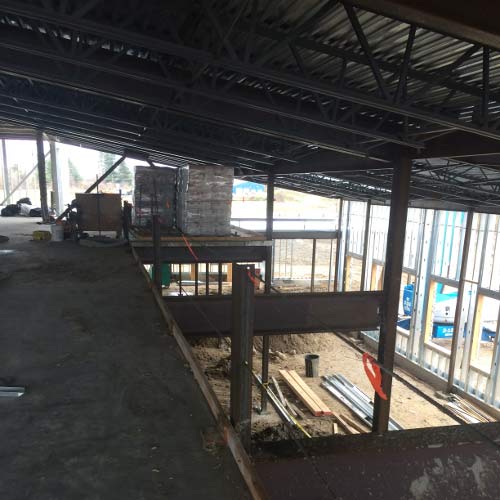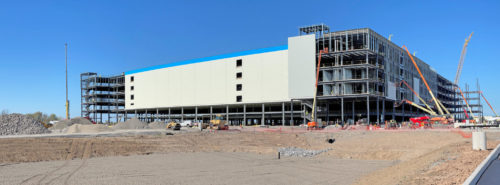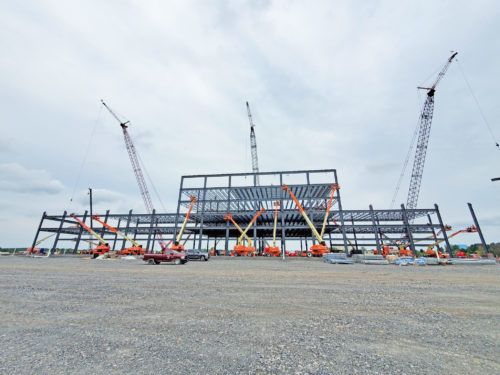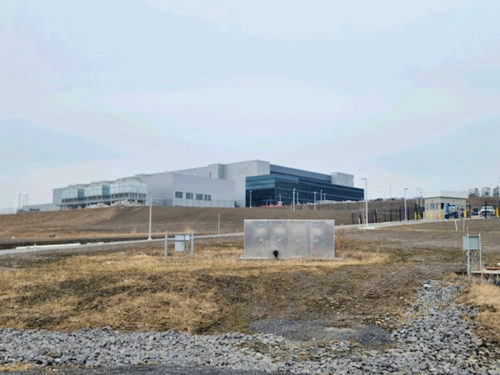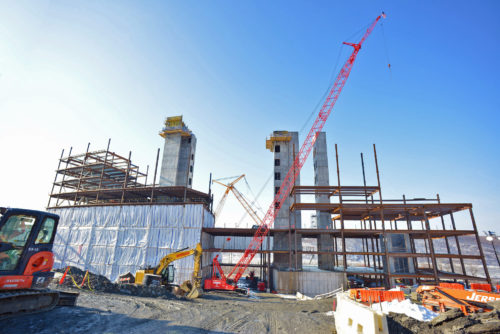Click the following link to view the PDF of this paper: Engineering Significance of Concrete Aggregate Tests

Steven N. Moore, PE
Senior Engineer
Atlantic Testing Laboratories
Aggregates used for concrete production are central in meeting performance and durability requirements of finished concrete. Aggregates are defined as granular materials, such as sand, gravel, and crushed stone used with a cementing medium to form hydraulic cement concrete or mortar (ASTM C125). The physical properties of aggregates, such as size, shape, absorption, porosity, angularity, density, and hardness, dictate how the aggregates and concrete mixtures will perform in service conditions. Standardized test methods are commonly developed to evaluate either the physical properties of aggregates or the expected in-service performance. Below are examples of common aggregate tests and what these evaluate.

Macroscopic (left) and associated microscopic (right) views of concrete aggregates.
- ASTM C136 – Sieve Analysis of Coarse and Fine Aggregates: This is a property test that evaluates the overall particle size distribution of an aggregate sample. Well-graded aggregates can help to optimize concrete mixtures, improving strength and workability.
- ASTM C127/C128 – Relative Density and Absorption of Coarse/Fine Aggregates: This is a property test that evaluates the relative density (specific gravity) and absorption of either coarse (C127) or fine (C128) aggregates. Relative density is used in the volumetric design of concrete mixtures. Highly absorptive aggregates can be detrimental to concrete durability and freeze-thaw resistance.
- ASTM C88 – Magnesium/Sodium Sulfate Soundness: This is a performance test that uses dissolved salts (either magnesium or sodium sulfate) in a series of wetting and drying cycles. The salt solution crystallizes within the pores of aggregates, creating internal pressures that can simulate the internal pressures of freezing and thawing.
- ASTM C666 – Resistance of Concrete to Rapid Freezing & Thawing: This is a performance test that evaluates a concrete mix for freeze-thaw resistance, particularly when aggregate soundness may be questionable.
- ASTM C1260/C1567 – Alkali Silica Reactivity (ASR) Test: This is a performance test that evaluates the potential alkali reactivity of coarse or fine aggregates (C1260), or the effectiveness of alternative cements (fly ash, silica fume, etc.) in mitigating alkali reactivity. Alkali is present in Portland cement and ASR can be extremely detrimental to concrete durability.
- ASTM C295 – Petrographic Analysis of Aggregates for Concrete: This is a guide for microscopically evaluating aggregates in respect to mineralogy, identifying microscopic physical characteristics and deleterious materials that may adversely affect concrete durability.
Each of these tests evaluates either a physical property or the expected performance of the aggregate, both having engineering significance when used in concrete mixtures.
ATL, a WBE certified company, can perform the referenced test methods, in addition to others identified in ASTM C33, Standard Specification for Concrete Aggregates. ATL has been providing laboratory testing and engineering support services from our AASHTO accredited and US Army Corps of Engineers validated laboratories for over 50 years.

Cracked coarse aggregate particle caused by alkali-silica reactivity (ASR). Note the ASR gel lining the walls of the crack.
ATL, a WBE certified company, has specialized seismographs and qualified personnel to perform vibration monitoring, as well as licensed Professional Engineers experienced in performing building condition surveys.
For more information, contact Steve Moore at 518-383-9144, info@atlantictesting.com, or visit www.AtlanticTesting.com.
|
ASSOCIATED SERVICES |
 |

